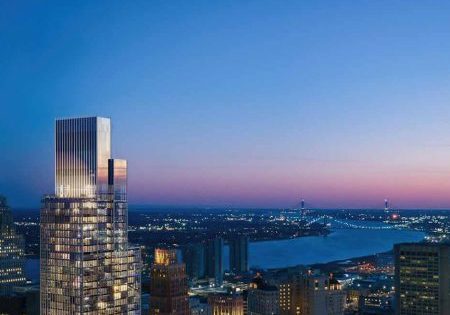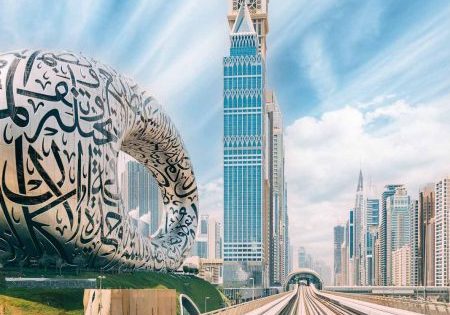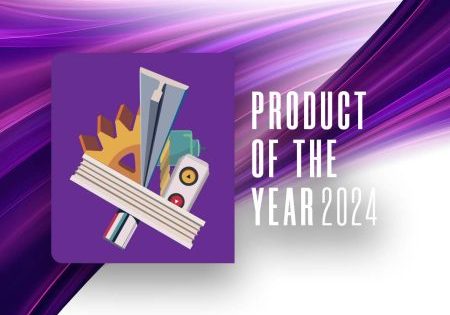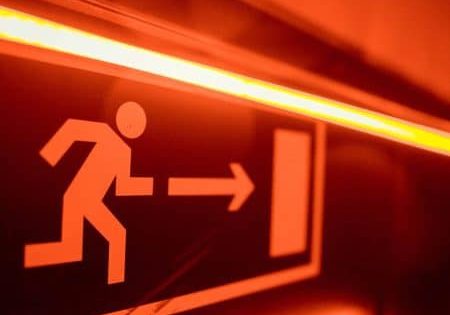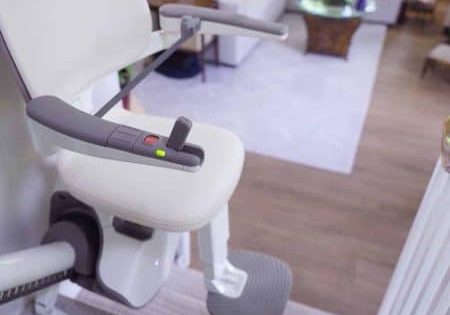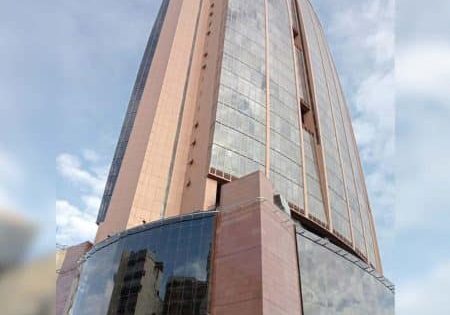A VT Conversation in London
Sep 3, 2024
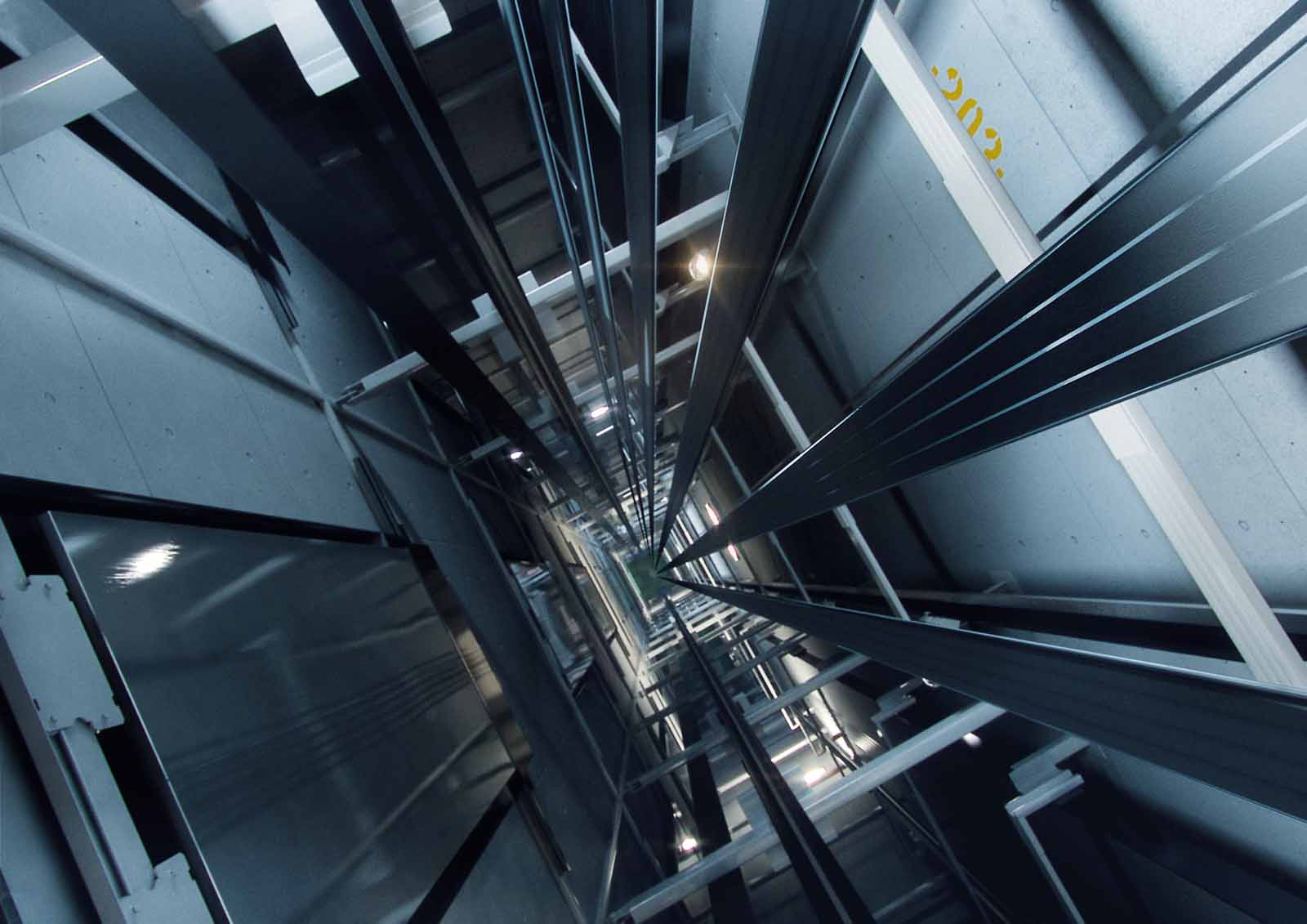
KONE’s Head of Major Projects in Great Britain talks VT trends and sustainability
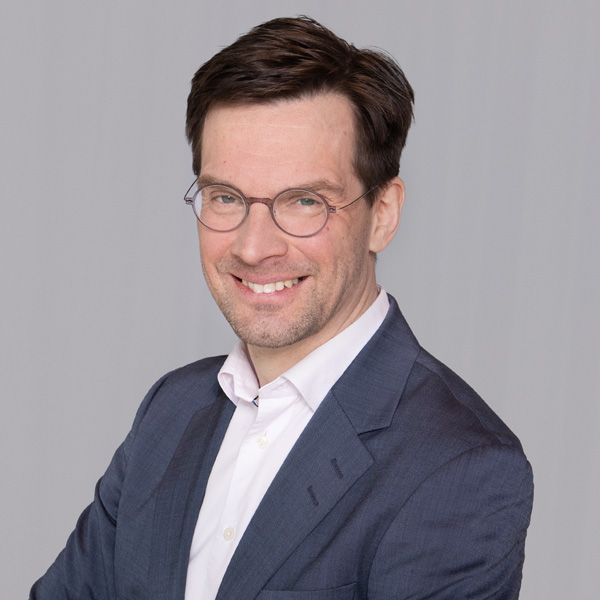
Samu Salmelin, KONE’s Head of Major Projects in Great Britain, joined the company in Finland 26 years ago after writing his master’s thesis in industrial management, combining environmental management and industrial R&D. He started his career as a design environment engineer and has since held many different roles in R&D and sales, conceptual development, digital R&D and business development, both for the Finnish market and globally. Samu has been based in London since August 2023. Your author (MO) met with Samu (SS) at the KONE offices in North Clapham, London, for a conversation about major projects, overall vertical-transportation (VT) trends and sustainability.
MO: What does your current role entail?
SS: I’m part of a team that looks after new building solutions, and my role is to look after major projects. My team focuses on high-rise buildings and some of the other high-quality buildings in Central London, including Canary Wharf.
My team and I are involved with building projects from the early stages by engaging with the customer during the design phase and through delivery. This might be a new construction, or, what we are increasingly seeing, a modernisation. We then collaborate closely with our service teams, which provide service of the equipment during the building’s life cycle.
MO: And when you say equipment, is it lifts and escalators, or is it more than that?
SS: It’s more than lifts and escalators. We also provide services including software and other digital solutions for moving people effectively in the building.
Then there are different kinds of integration. How do you make building access control work together with the lift so that you get a seamless user experience for office workers when they come into the building or move around the building? How do you facilitate this with different kinds of applications or other means of managing access? We play our part in software integration, and of course, we need to integrate our solutions with a range of other companies from multinational access control companies to startups.
MO: What trends are you seeing now that you think have a big impact on the VT market?
SS: I’d like to start with the driving forces. Urbanisation is the first driving force with people moving into cities and driving up density: Central London is a great example of this. It’s, of course, about the buildings, but it’s also about public transportation and how these are connected to enable more sustainable cities.
The second big driving force is technology. How does technology help deliver different outcomes? Digitalisation has been the big topic lately, along with AI. What is important is that new, potentially useful, technologies can be harnessed and put to use with the customer. It is not about only trying out those technologies inside the R&D lab, but actually focusing on where customers would like to make use of those new technologies.
The third driving force is sustainability. While I’ve been working a lot in the environmental sustainability area, it’s been interesting to see how it has become the norm compared to how it used to be.
MO: What do your customers ask for in terms of sustainability?
SS: The different kinds of green building schemes — LEED, BREEAM, etc. — have existed for some time. BREEAM and LEED have brought us forward, but it’s not enough to meet these certifications. Customers are increasingly asking about embodied carbon at a building level and the actual measured performance of the building. That is the basis of the life cycle assessments we initiated at KONE.
Now, it’s also about how to optimise the building and how to take embodied carbon into account. The role of carbon optimisation has become bigger because, when there are targets for 2030 or 2040, you cannot just rely on the savings in the full life cycle. You must focus on the embodied carbon that will be invested now, or you may be able to avoid some of that with modernisation. So how can you calculate that and use that data in actual building optimisation? I think that’s one of the hot topics in this area. London is a place where clients are really taking those next steps, and we are happy to work with them.

MO: What is KONE doing to support this?
SS: When we are working with our customers on new projects, we are asked to provide environmental impact data and to work as part of the team that looks for new options to improve the carbon footprint of the building. We also look at how we can make significant reductions in carbon, both in the operations and the production of services that we deliver to our clients.
We work with our suppliers to meet our targets and to drive sustainability in the whole supply chain. In our 10 manufacturing units in seven countries, we have already met the target of becoming carbon neutral. This is 18 months ahead of our internal planned schedule.
MO: What has made KONE so successful in hitting this goal ahead of schedule?
SS: I think it is the long-term work that we have been doing in this area. From the top, KONE has made a commitment to sustainability as a company. We have been given clear direction to be bold and set ambitious targets. That helps to reach those targets and not hesitate when making improvements.
MO: Tell me more about working with your customers on using digitalisation.
SS: I think sustainability and smart technology should work together. Part of that is the user experience because you can’t just optimise the building’s carbon. You also have to make it attractive for the end users. For example, our clients are considering what the future workplace looks like for their own company and/or the companies for which they are developing buildings.
That’s something we reflect on: How we can help? Our business is People Flow — how people move in buildings and making that as smooth as possible. For example, in the workplace, you used to have a fixed desk, but now companies want to have more communal spaces with co-working facilities, so it’s a kind of hybrid workplace. The pattern of work has changed. We see less of the three traditional peak times in the office, and there’s much more traffic between floors throughout the day. We need to make sure that the building doesn’t become congested during lunch or for people moving between floors. That’s another area where we have developed innovations that have reduced wait times in this kind of scenario. The interesting thing is that the same technology helps us to become even more sustainable outside of peak hours. With this optimisation, we can save energy.
From the top, KONE has made a commitment to sustainability as a company. We have been given clear direction to be bold and set ambitious targets.
— Samu Salmelin, KONE’s Head of Major Projects in Great Britain
Companies are having to look at how to best facilitate having people in the office and how to attract people to their business. We provide a solution and an infrastructure. Our solutions are increasingly software-based, which means they are more adaptable during the life cycle of the building than the previous generation of products.
And then we have interfaces, so called APIs, to integrate with building apps, and this standardised way of integration also facilitates upgrades. We believe in an open ecosystem to have partners that enhance our solutions and make them work in different types of buildings. To have the capability to integrate with this kind of open protocol is really, really important. I think there are a lot of opportunities still to come in this area.
MO: You mentioned modernising briefly earlier. Could you please elaborate?
SS: We often get involved with changing the use of a building — for example, retail buildings being converted to residences or hotels. A more typical example is upgrading an office to current standards and possibly to “relife” the whole building. This starts from sustainability legislation. You need to achieve a certain energy performance rating to be in the market in the first place.
To “relife” a building, you take an existing building and rip out everything apart from the concrete core. You don’t need to rebuild the core, and you can also retain some parts of the lift. Then you rebuild to meet current standards and save on carbon. You calculate how much you save in optimising sustainability and cost. Now, sustainability is more important than ever in that equation.
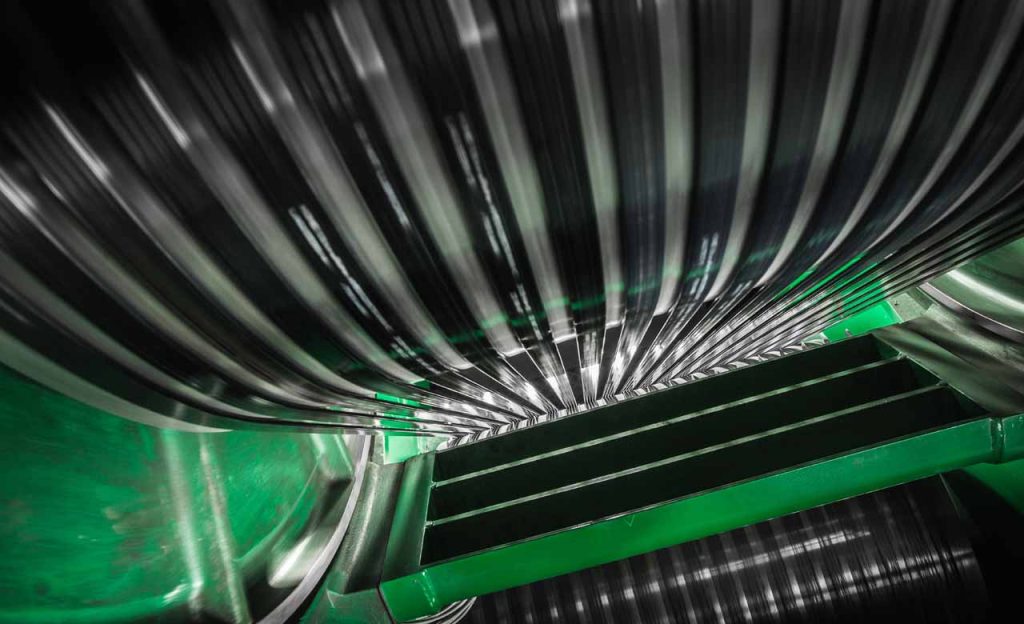
MO: When you talk about technological change, what about security and cybersecurity?
SS: Safety is fundamental in our industry, and we’ve taken cybersecurity to be part of safety. When KONE started investing in Internet of Things (IoT) connectivity, we decided that it needs to meet cybersecurity standards. When you have a connected digital product, it has to be cybersecure. It’s fundamental. This also requires investment in people and partners who are knowledgeable in that area.
MO: Are there any other trends for building materials?
SS: We have, of course, our own material innovations. We have been using carbon-fibre ropes instead of steel to enable a new generation of high-rise lifts. Carbon fibre provides a big benefit in terms of sustainability because you’re able to optimise the components, reduce energy consumption during use and optimise the building because of the lighter hoisting system.
MO: Why is it important to be adaptable in modernisations?
SS: When buildings are modernised, being adaptable is a necessity. The modernisation cycle used to be 25-30 years, but we’ve seen the cycles are becoming shorter. To keep the building competitive, you may need to upgrade it more often, and the next big change might be in 10 years. If there are a lot of new buildings going up, you need to look next door and see what others offer their tenants to stay in the game. Tenants’ demands drive the modernisation cycle to a certain extent.
MO: Are there any examples you would like to highlight showcasing KONE’s sustainability achievements?
SS: In tall buildings, the innovations we have created with KONE UltraRope® hoisting technology are significant. Also, how we look at the usage of a building and how we can save energy are achievements. I think there’s approximately a 30% possibility on the industry standard to reduce the carbon footprint of the life cycle, which is significant.
We have the current generation of such lifts at 8 Bishopsgate in central London. Here we used KONE MiniSpace™ lifts; these are double-deck lifts that save core space due to having two cars on top of each other. This has made a small footprint possible while still allowing maximum leasable floor space. These lifts are roped with carbon-fibre KONE UltraRope and the latest People Flow® technology to enable energy savings while making the building work.
MO: How accommodating are building owners to these new ideas when you first present them?
SS: I think London has been an innovation hub for a long time. This is the place where innovations are often tested. Clients ask for something, and together, we find a way to make it real. In this city, there are definitely clients who want to push the limits and look for new innovations. That’s a great thing about London: We are able to develop something new and innovate together with our clients. Great examples include the KONE UltraRope hoisting technology and our advancements in making construction time logistics more efficient. An example of this is the KONE JumpLift™ that grows while the building is being built. We used this for 8 Bishopsgate and One Leadenhall, among others.
I have my local team working with our manufacturing sites and R&D, and we have quite a wide team coming together to make things happen. That’s both interesting and inspiring. With my background in different roles at KONE, it is nice to see how we, as a team, come up with something and then deliver it, successfully, with our client. Major projects, which are, by definition, complex and demanding, require teamwork, and quality requirements are high. You need competent people, or you can’t do it.
MO: Talking about demanding projects, are there any new projects you’re able to talk about?
SS: One Leadenhall, which is under construction now in London, is being developed by Brookfield Properties. We have been involved since the early phase and worked on how we can contribute to logistics during the construction phase. Four KONE JumpLifts have been growing with the building as it is going up, and hence, we have been able to provide lift service for all trades working on the building site, making the building construction more efficient. At the same time, there is a request to make it a workplace of the future, so we have our latest destination control system to integrate with the building before it is handed over. It is scheduled for completion in 2025.
MO: What does the future hold for KONE and major projects in London?
SS: I think the sustainability trend is going to continue. I really want to be a part of future sustainable buildings and help clients optimise them. I think there’s still a lot of work to do in how you use data and iterate the design in the best possible way. I believe we have a good opportunity to innovate more in sustainability. When I think, for example, how we simulate people flow, what else can we do? We could develop more tools and, as a wider industry, optimise carbon even more and make it more seamless going forward. That’s one area.
Second, it’s modernisation. There are new things appearing like building “relifing” in London. How about upgrades during the lifetime when changes are needed? How do you adapt to those changes and help the building perform better? It’s a lot about how to work together with the client in different phases. And, especially with sustainability, you need to be part of the design process at an early stage to be able to optimise its uses and put the right infrastructure in place.
We have been working on major projects in London for a long time. I think the opportunity to work with clients and how we are able to reshape and continue to develop the London skyline is really exciting.
Get more of Elevator World. Sign up for our free e-newsletter.


